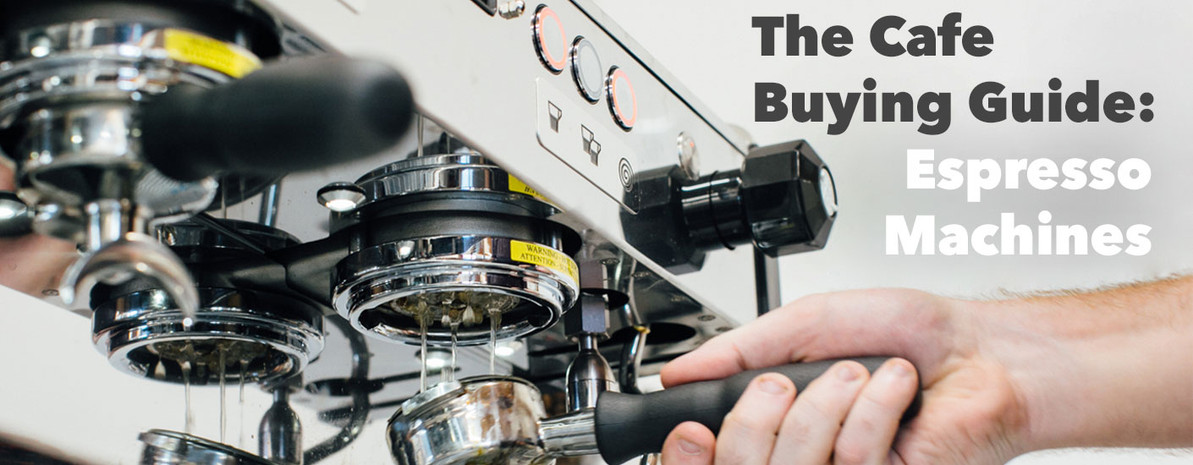The Cafe Equipment Buying Guide: Espresso Machines
A guide to choosing the right espresso machine for your café, restaurant, or any other business offering espresso service.
The espresso machine is the linchpin for most modern cafes, so it shouldn’t be a surprise that choosing one for a retail space can be nearly overwhelming for novice and veteran coffee folx alike. With so many options and features to consider and compare, where do you even start? This guide is here to take some of the guesswork out of your decision making process—we’re going to break down some important factors to consider, introduce you to a wide variety of commercial machines, and hopefully leave you feeling empowered to make the right choice for whatever adventure you’re on.
Factors to Consider
Output
The first factor you’ll need to weigh is what the total output capacity needs to be for your operation. Oftentimes you’ll hear people talk about drinks per day or even drinks per week when comparing sales volume, but for your espresso machine’s sake you’ll have to think about how many drinks per hour you can expect to make in your busiest possible hour of business. Are you a space where coffee is secondary, like a bookstore or restaurant? Are you a study-spot for students, expecting full seats but only brief steady lines? Are you a drive-through café aiming for 150 drinks per hour through your morning rush? Each business certainly needs different production volumes out of their equipment.
To start assessing the capacity of different machines you could compare features like the size of the steam boiler as well as the power in the boiler’s heating element. These numbers won’t always give definitive insight into the machine’s potential, but you can typically assume that a larger steam boiler ultimately has greater steam capacity than a smaller steam boiler, and that fewer watts/liter in the heating element will require longer or more frequent recovery times between use. Many cafes looking at doing up to 30–50 espresso drinks per hour would do well with a 7–10 liter steam boiler, though if you believe that your business could outpace that rate (even occasionally) it’s definitely wise to consider a machine with an even larger boiler size.
Most dedicated commercial espresso machines are only available with 220v power capabilities (in the U.S.), though there are occasional exceptions to that rule. That being said, 110v machines are certainly best suited for home use or very low volume commercial applications where you won’t ever need to make more than a few drinks back-to-back.
Neither power or water capacity stand on their own in determining a machine's total output potential, but looking at both metrics can give you a good idea of what an espresso machine is capable of. Most cafes will never outpace a two-group espresso machine operating on 220v power, but if you expect to have hours that push 50+ espresso-and-milk drinks you should definitely do some thinking about whether a three-group machine with a larger boiler and more powerful heating elements is the right choice.
Certifications
Food safety laws vary from place to place, but it’s guaranteed that your equipment will need to be certified for food service. Commercial espresso machines will all carry various certifications, but it’s always a good idea to check which certifications are required in your locality and to make sure that the machine you’re considering meets those needs.
Budget
This might seem like a gimme, but deciding ahead of time how much of your total budget can go toward an espresso machine will help you narrow the list almost immediately. Ranging from a few thousand to tens-of-thousands of dollars espresso machines vary widely in price; while some of these price differences reflect an increase in output capacity, or material and build quality, some of the top end pricing is related more to increased performance consistency, or the addition of creature comforts and dazzling customizable exteriors.
Boiler Type
The boiler set up in your espresso machine determines how water is heated, stored, and used for different parts of the machine. Commercial espresso machines will almost always fall into one of two categories—heat exchange machines, or dual/multi-boiler machines.
Heat exchange machines use a single boiler for both producing steam and heating water to brew coffee. The boiler is kept at a high temperature (above boiling) to create pressure for steam; meanwhile, a metal line (typically copper) is coiled through the superheated boiler to carry water to the grouphead, heating fresh water almost immediately and ensuring that your brew water is sufficiently hot. The temperature of the brew water correlates directly to incoming water temperature and total contact time with the hot copper lines in the boiler, which means that your brew temperature can fluctuate wildly if you’re not attentive. Heat exchange machines are also liable to lose temperature and pressure in the steam boiler much more quickly than their dual-boiler counterparts, which means they’re not terribly well-suited for high-volume use.
Dual or multi-boiler machines use different boilers for different purposes—one for steam production, and one or more to heat brew water. This allows for more precise control over your brewing temperature set point, and also means increased temperature consistency from shot to shot compared to a heat exchange machine. While these machines are typically sought out for their high-volume capacity and extraction consistency, they do carry a steeper ticket price.
Machine Type
The way a barista uses an espresso machine to make drinks can vary widely as well, typically broken down into different machine categories that we refer to as manual, semi-automatic, automatic, and super-automatic. Each machine type requires a different amount of attention and skill from the barista, giving you more or less control over the final product which has its own pros and cons.
A manual espresso machine hearkens back to an earlier time of espresso preparation, requiring the barista to apply pressure for brewing themselves, typically via a spring assisted lever system. This machine type will have the greatest variability from extraction to extraction because the brewing pressure is much more susceptible to variability due to the hands-on nature of the equipment and mechanical function of the springs, as well as being a significant tax on the physical abilities of baristas. Also worth noting, manual machines like this will require more involved upkeep maintenance than most "modern" machines due to the more-involved mechanics that make their groups work.
Semi-automatic machines still need the barista to both start and stop the espresso brewing, but the pressure now comes from a mechanical pump instead of the from the barista themselves. While greatly increasing the consistency of your brewing pressure these machines are still liable to have fluctuations in brewed espresso yield if the barista isn’t attentive, though that also means that a knowledgeable barista has more opportunity to make adjustments on the fly when necessary.
Automatic machines have grown more and more popular in specialty coffee through the last number of years with the implementation of several upgrades to automated brewing. Ranging from machines that will dispense a fixed dose of water per espresso, to machines that will automatically weigh your coffee dose and calculate how much water to use for brewing, there’s a huge variety of automatic machines that work well in a variety of businesses. The biggest advantages will be in coffee consistency, as well as the freedom the machine can afford a barista to manage other tasks while an espresso brews.
Super-automatics are essentially coffee robots—machines made to grind, dose, tamp, brew, and steam a beverage from start to finish at the touch of a button. Allowing little-to-no control for baristas these machines are the tools you often see in big-box coffee shops, used to make an exceedingly consistent product with less potential of producing an exceptional product.
Bells + Whistles
Lastly, there are all kinds of extras, add-ons, adornments, and upgrades that you can consider when making your final decision. The simplest upgrades are customizable exteriors—would you like metal or stained wood for the body panels? Brass, copper, or powder-coated hardware?—allowing you to fit your machine into the aesthetic space of your business. Other options might include auto-steaming systems, or insulated "cool-touch" steam wands that will safeguard baristas from painful burns on their hands and arms. One piece of hardware to look out for that would have a huge impact on the consistency of your machine is a PID controller (or several) in your machine; these typically aren’t upgrades that you can add, but will absolutely influence the way your machine works. PID (or Proportional Integral Derivative) controllers work to give regular feedback to the heating elements of your machine, noting any deviation from the set point temperature of a boiler to ensure that the temperature stays within an acceptable range. These controllers will make a big difference in the consistency of the operation of whichever boiler they monitor, resulting in more consistent extractions thanks to consistent brew temperatures, and more consistent steam pressure thanks to better regulated steam boiler conditions.
The Espresso Machines
With so many machines to choose from we wanted to give you a quick breakdown of several machines to use as the starting point for your comparison. You can find a little information on each machine that we offer at Prima, as well as some background on each of our manufacturers below.
Astoria
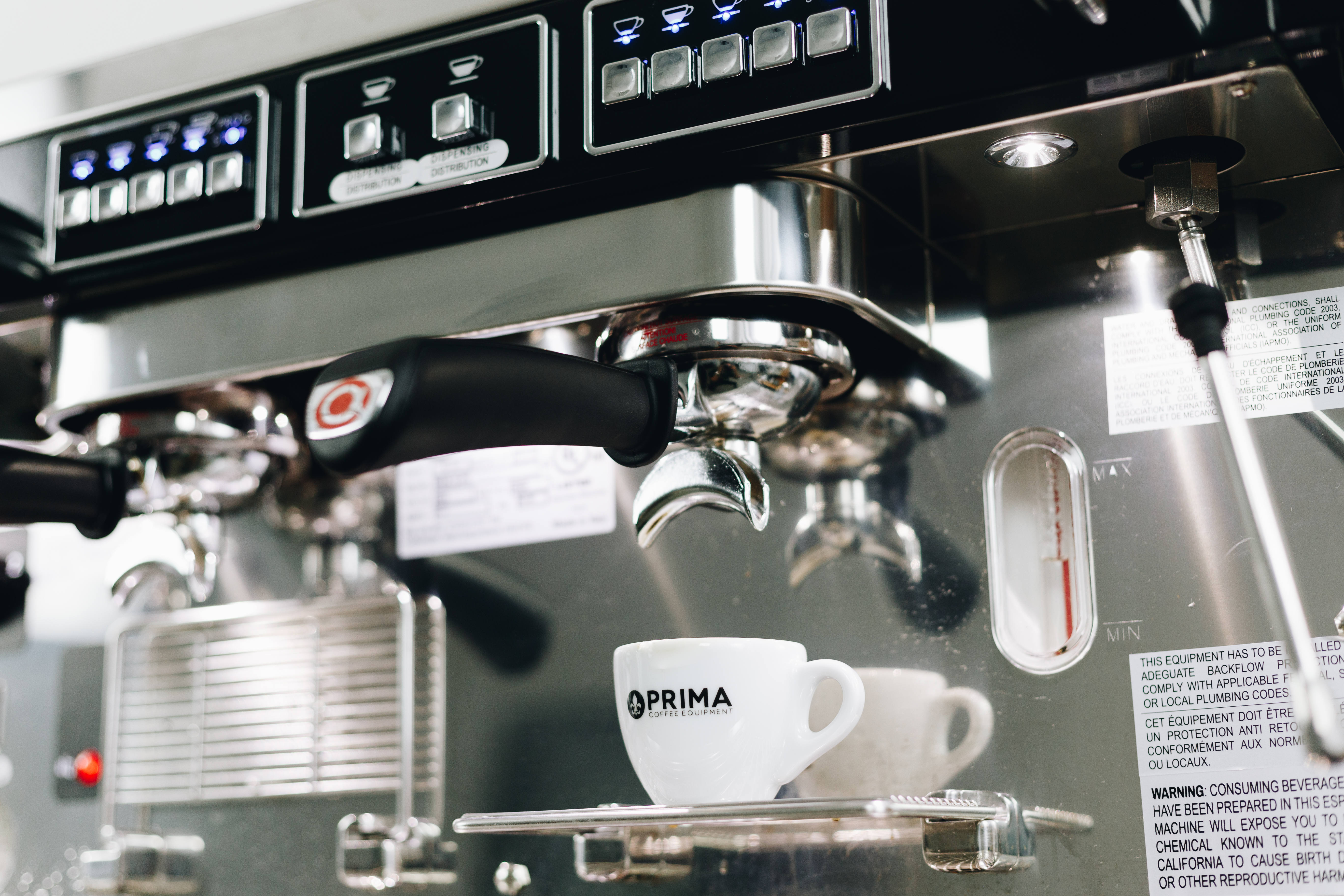
Italian company Astoria has been around since the late 1960’s, perhaps best known today for their budget-friendly line of commercial heat-exchange machines with the Perla, Gloria, and Sabrina all coming in near or under the $10k mark. Through continued investment in design and research some of their newer machines—the Plus 4 You and the Tempesta, specifically—step out of that box though and give you the chance to consider Astoria as a manufacturer that can compete with any of the biggest names on the market today with their multi-boiler, eco-thoughtful, high-volume capable coffee makers.
Pratic Avant
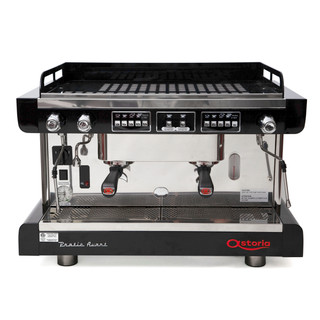
The Pratic Avant is a true entry-level espresso machine: it is easy on the wallet and it is easy to operate. Available in 1, 2, or 3, groups, it has one huge boiler to power both the coffee and steam operations through a heat-exchange system. Raised groups, an extra set of 4" legs, and downlights on the drip tray come standard with the Pratic Avant.
Notable Features:
- Heat Exchange boiler
- Volumetric option
- Available in 1, 2, and 3 groups
- Available in two colors
- Powerful steam
Gloria
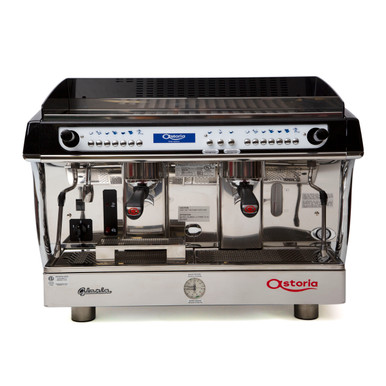
The Gloria builds on the simplicity of the Perla by stepping up the power in the heating elements and making a couple of small updates meant to streamline café use. Raised groups make it easier to fit larger to-go cups underneath your portafilter, and the joystick steam wand (on the automatic version) will simplify milk steaming just a bit for the barista. A great consideration for the budget-conscious buyer looking for a machine that will keep up comfortably in mid-volume café environments.
Notable Features:
- Heat Exchange boiler
- Built-in preinfusion
- 1, 2, and 3 raised groups available
- Available in three colors
- Cool-touch wands and auto-steaming available as upgrades
Sabrina
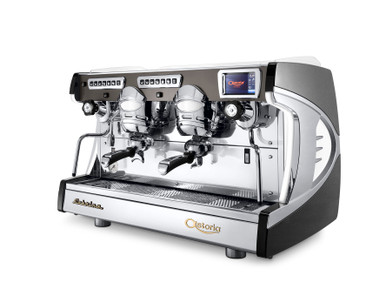
With retro-chic styling and several barista-friendly standard features, Astoria’s Sabrina rounds out their money-wise heat-exchange line up. Taking a step toward modern convenience with a touch screen display for monitoring the machine’s use statistics, as well as programming its auto-volumetric functionality, the Sabrina brings everything we love about the Gloria along to produce a user-friendly, mid-to-high volume capable machine.
Notable Features:
- Heat Exchange boiler
- Auto-volumetric programming
- Built-in preinfusion
- 2 and 3 raised groups available
- Touch screen display
- White LED accent lights
- Cool-touch wands
- Auto-steaming and multi-colored RGB LEDs available as upgrades
Tempesta
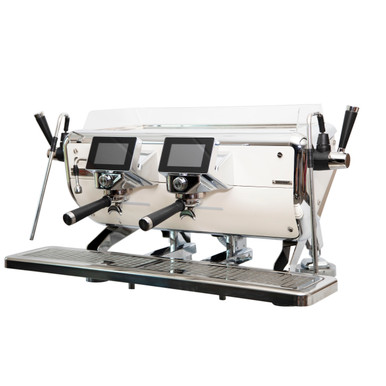
The Tempesta is a marked shift away from the budget-conscious heat-exchange machines that Astoria has made their name on. A multi-boiler machine, with independently heated brew boilers as well as independently heated group heads, the Tempesta is packed with technology and creature comforts that compete with most any other machine available today when it comes to functionality, temperature stability, and barista-friendly design. 5" touch screen displays on each group make programming a cinch, Astoria’s Green Line technology gives you built-in energy savings, live pressure and flow graphing provides insight into how your extraction is going, and auto-volumetric programming makes this a machine that anyone can pull a shot on. There are loads of espresso machines out there, but the Tempesta is certainly not one to be overlooked.
Notable Features:
- Multi-boiler machine
- Independently heated brew boilers and groupheads
- Auto-volumetric programming
- Programmable preinfusion
- 2 and 3 raised groups available
- Individual touchscreen displays per group
- Green Line energy saving
- Cool-touch wands
La Marzocco
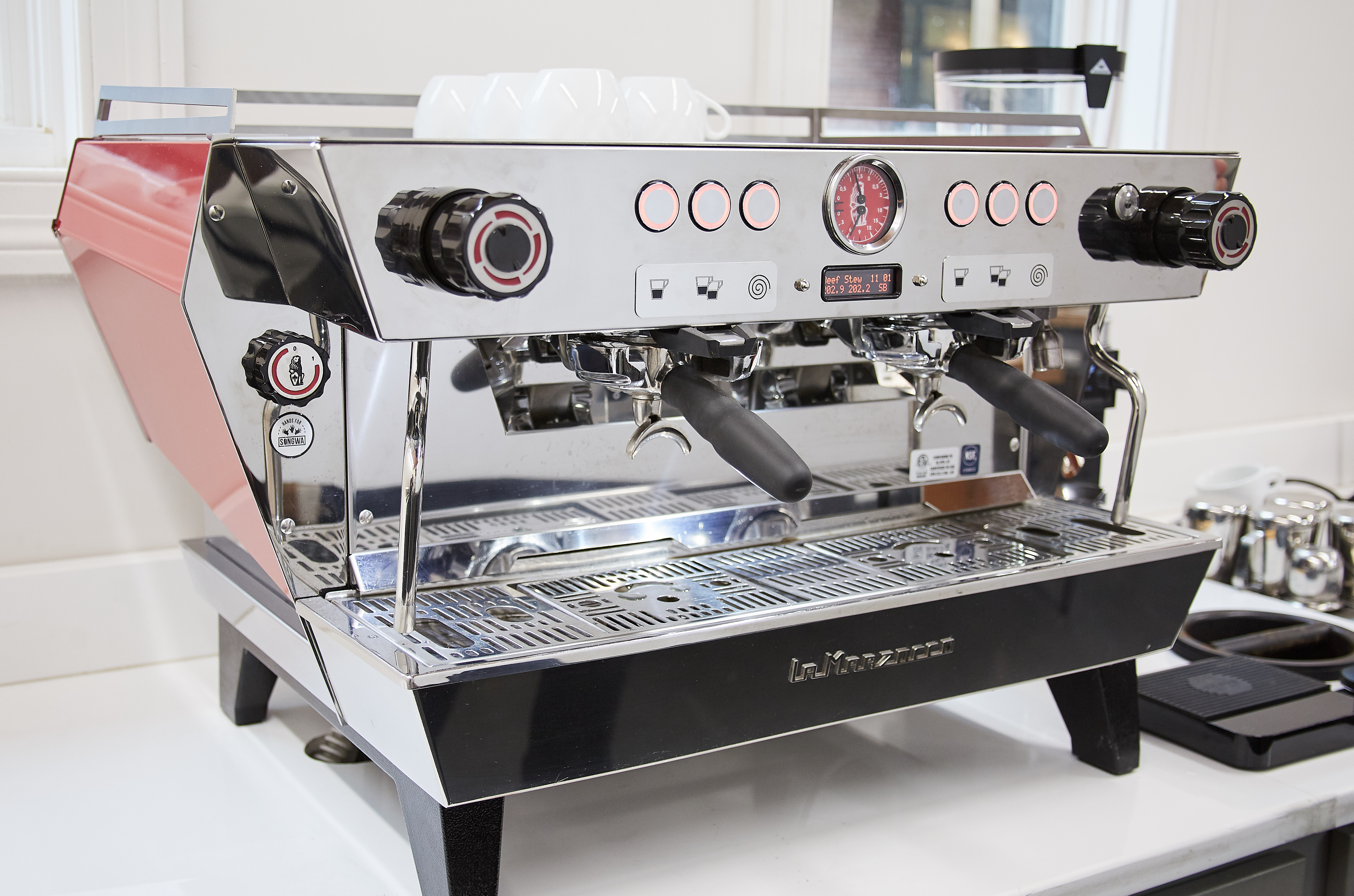
Since 1927 La Marzocco has helped define the espresso machine across the globe. From their early patents and revolutionary design choices like the horizontal boiler or saturated groups, to their straight-in portafilter system decades later on the KB90, La Marzocco has been one of the most forward-thinking names in espresso and doesn’t seem to be going away any time soon.
GS3
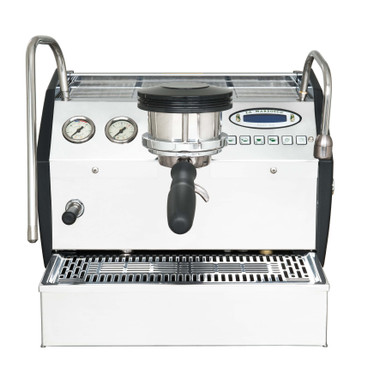
A one-group wonder, the GS3 is often looked at as the benchmark for single group espresso machines at the top level of home use, as well as for small-scale commercial settings where space is at a premium. This machine brings together all of the mechanical goodies you expect in a La Marzocco machine—dual-boilers, PID controlled brew temperature, rotary pump, easy to program digital display, etc.—into an all-in-one self-contained package that you can either plumb directly or run from a water reservoir.
Notable Features:
- Dual boiler machine
- Available with manual paddle or auto-volumetric operation
- PID controlled brew boiler
- Cool-touch steam wand and hot water tap
- Digital display
- Can operate without being plumbed
- Available in 110v and 220v
Linea Classic
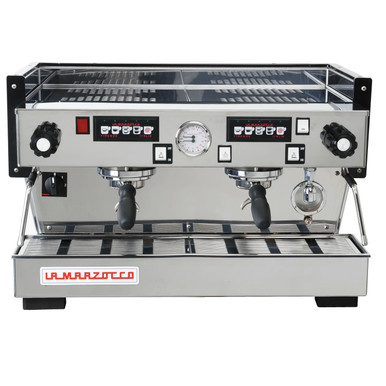
An espresso bar stalwart since 1988, the Linea is a workhorse. Capable of essentially any volume demands, this machine continues to set the standards by which many La Marzocco machines, and truly most commercial espresso machines, are judged. Temperature stable, aesthetically simple, and available with 1–4 groups standard, the Linea can fit effortlessly into most any service environment.
Notable Features:
- Dual boiler machine
- Available in semi-auto, auto-volumetric, or manual paddle operation (MP not available in the US)
- PID controlled brew boiler
- Precision brew baskets
- Reliable with high volume use
Linea PB
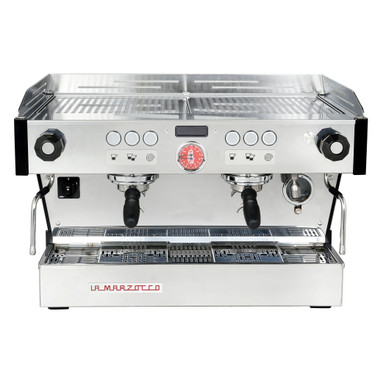
A modern update to the well loved Linea Classic, the Linea PB adds fresh technology into an already rock-solid machine. Some small changes—like improved thermal stability and volumetric dosing—can get overlooked for flashier upgrades like the new digital display, an auto-backflash program, and an energy saving mode for idle periods that make this one of the most café-friendly machines available.
Notable Features:
- Dual boiler machine
- Improved auto-volumetrics
- Dual PID controlled boiler temperatures
- Optional Auto Brew Ratio technology with built-in scales
- Digital Display
- Available with 2–4 groups
- Precision brew baskets
- Reliable with high volume use
GB5
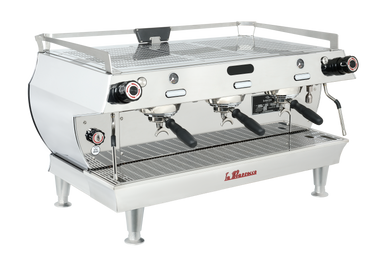
The GB5 is another dependable machine using many of the hallmark features that makes La Marzocco so popular. A good option for someone looking for a machine technologically somewhere between the Linea Classic and the Linea PB, but with all of the reliability you can expect from either of those machines.
Notable Features:
- Dual boiler machine
- Auto-volumetric or semi-automatic
- Temperature stability improvements (new Piero group caps, preheated water for brew boiler)
- Dual PID controlled boiler temperatures
- Digital Display
- Available with 2–4 groups
- Precision brew baskets
- Reliable with high volume use
Strada
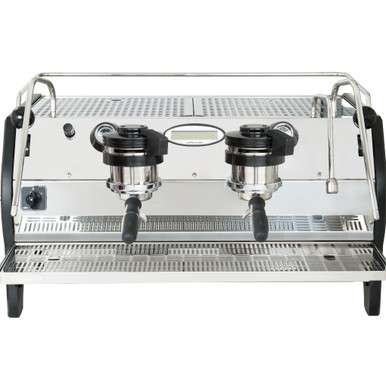
Designed with a team of baristas for the purpose of making the ultimate café machine, the Strada checks a lot of barista-friendly boxes. Giving users more control over the machine was one of the results of that design process, including independently heated brew boilers for each group, programmable preinfusion, and a proportional steam valve for precise steam pressure for any volume of milk. Put all of that in a low-profile housing—meant to encourage more engagement between baristas and patrons—and this machine is a professional barista’s dream.
Notable Features:
- Multi-boiler machine
- Manual paddle, semi-auto, or auto-volumetric (with optional scales and Auto Brew Ratio technology)
- Independent PID controlled temperatures per boiler
- Cool-touch steam wands
- Adjustable drip tray height
- Digital Display
- Available with 2–4 groups
- Precision brew baskets
- Reliable with high volume use
KB90

Dubbed "The Ultimate Workflow Machine" by La Marzocco, the KB90 is top-of-the-pile when it comes to on-bar efficiency and sensible ergonomics. From seemingly small considerations—like auto-flushing groups for you after an extraction, adding cool-touch wands as a standard feature, or the addition of drip prediction to their Auto Brew Ratio technology—to big overhaul changes like their straight-in portafilter design made to reduce physical strain and repetitive stress injuries for baristas, La Marzocco has continued to lead the way with ingenuity and thoughtfully creative solutions to problems at the café level.
Notable Features:
- Multi-boiler machine
- Auto-volumetric machine with optional Auto Brew Ratio technology
- Independent PID controlled temperatures per boiler
- Straight-in portafilter locking system
- Auto-flush after each extraction
- Cool-touch steam wands
- Available with 2–3 groups
- Precision brew baskets
Nuova Simonelli

Orlando Simonelli built his first espresso machine in 1936, presumably unaware that the company he would help create, Nuova Simonelli, would eventually become the most ubiquitous espresso machine manufacturer in the world. From compact single group offerings like the Appia Compact, to robust and tireless high-volume equipment like the Aurelia Wave T3, these machines have earned a reputation for reliability and ease of use.
Appia Compact II
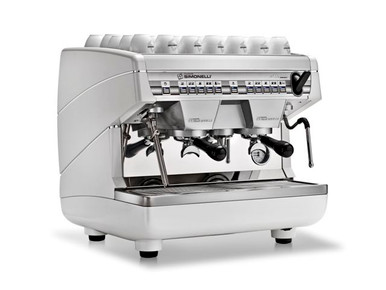
With a footprint under four square feet you’ll be hard pressed to find a two group machine that’s more space-conscious than the Appia Compact. Made for lower volume environments this machine comes with fairly basic mechanical features, making it a low-maintenance piece of equipment that anyone can use easily.
Notable Features:
- Heat exchange boiler
- Available with auto-volumetrics or semi-auto
- Two group machine
- Compact footprint (22" wide, 22" deep, 21" tall)
- Cool-touch wands
- 110v or 220v
Appia II
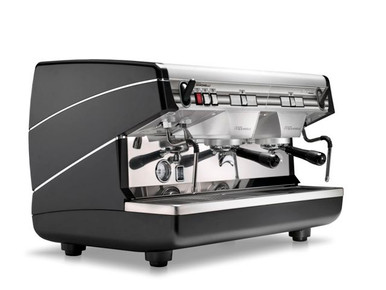
The Appia II is a no-frills machine, made to satisfy cafes with mid volume needs on a budget. You can expect a feature-set similar to the Appia Compact II, but with a larger boiler, more power, and more elbow room while you work.
Notable Features:
- Heat exchange boiler
- Available with auto-volumetrics or semi-auto
- 1, 2, or 3 groups
- Cool-touch wands
- Automatic cleaning program
Aurelia Wave
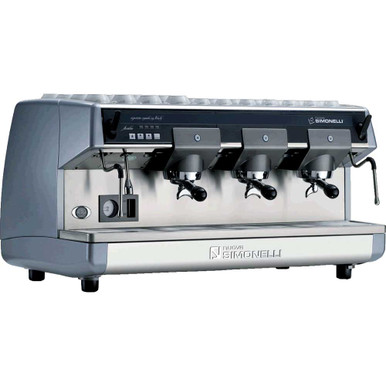
The latest generation of Aurelia machines showcase some significant technological steps forward from its predecessor, the Aurelia II, by adding Smart Water technology as well as the introduction of their new Pulse-Jet system. Smart Water will monitor the water quality coming into the espresso machine, notifying you of any significant changes that could be harmful to your Aurelia Wave, while Pulse-Jet technology gives you control over the flow and pressure of brew water during your extraction. While the three group version of these machines (the Wave Auto-Volumetric and Wave Semi-Auto) can likely keep up with high-volume use, they’re recommended ideally for businesses in the mid-to-high range.
Notable Features:
- Heat-exchange boiler
- Available with auto-volumetrics or semi-auto
- 2–3 groups
- Smart Water Technology
- Pulse-Jet Technology
- Cool-touch wands
- Automatic cleaning program
Aurelia Wave Digit
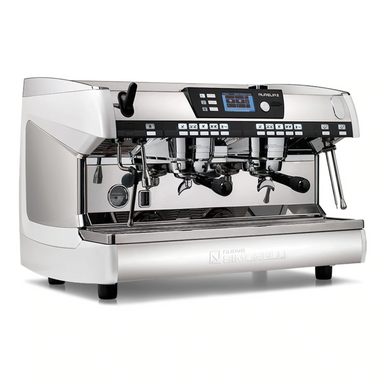
Building on the Aurelia Wave platform the Digit adds a standard touch-screen interface for easy machine programming, as well as larger heating elements that make this machine comfortable performing in any high-volume environment.
Notable Features:
- Heat-exchange boiler
- Available with auto-volumetrics or semi-auto
- 2–3 groups
- 4.3" touchscreen interface
- Smart Water Technology
- Pulse-Jet Technology
- Cool-touch wands
- Automatic cleaning program
Aurelia Wave T3
Nuova Simonelli’s flagship machine, the T3, takes everything good about the Aurelia Wave series and tops it all off with increased temperature stability and a few bells and whistles that you won’t get on other Wave machines (like dedicated shot timers on each group). The most noteworthy difference is certainly in the technology that gives the T3 its name, giving you three distinct points of temperature control at the primary boiler, each group boiler, and at each group head to ensure temperature and extraction consistency.
Notable Features:
- Multi-boiler machine
- PID controlled T3 technology
- 2–3 groups
- 4.3" touchscreen interface
- Smart Water Technology
- Pulse-Jet Technology
- Cool-touch wands
- Automatic cleaning program
Slayer
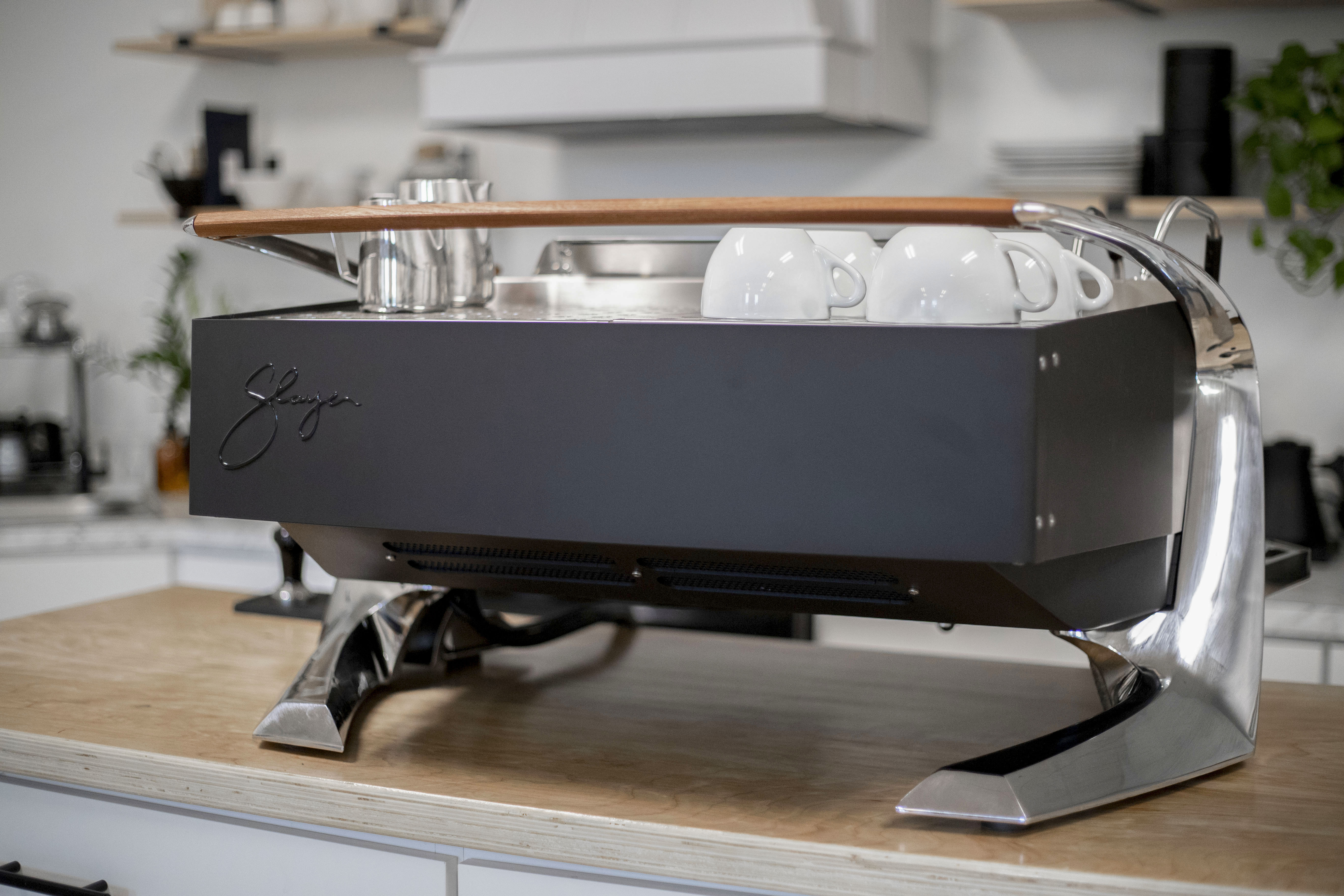
Highly customizable exteriors, an innovative approach to espresso extraction, and a penchant for continuing to tinker, reiterate, and improve have been some of the defining characteristics of Slayer ever since its inception in 2007. Now offering the Slayer Espresso and two versions of the Slayer Steam, every machine is hand built in Seattle, WA and will almost assuredly look stunning on your countertop while brewing up consistent and delicious espresso.
Slayer Espresso
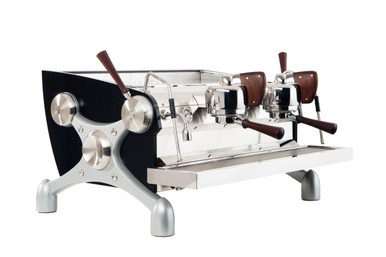
The flagship machine that started it all, the machine now known as the Slayer Espresso brought together PID-controlled, multi-boiler temperature stability with an ingenious needle valve design to manage water flow to the grouphead, giving them second-to-none flavor profiling. Slayer offers loads of customization options for these machines, including material and color options for the body panels, different finishes and wood grains for hardware and accents, and more. The Slayer Espresso is a great option for adventurous and bold coffee folks, or aesthetically picky people looking for the perfect machine for their countertop.
Notable Features:
- Multi-boiler machine
- Semi-automatic operation
- Needle valve flow control/flavor profiling
- PID temperature control
- 1–3 groups
- Exceedingly customizable
- Digital display
- High volume capable (2 and 3 group machines)
Slayer Steam
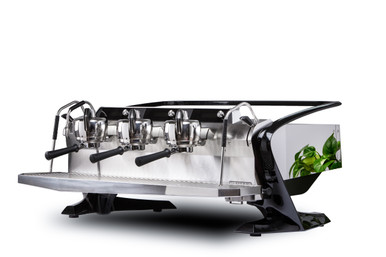
The Steam takes Slayer into the world of automatic espresso brewing and focuses on efficiency and workflow instead of perfect flow control and extraction. There are multiple versions of the Steam, all boasting auto-volumetric brewing for ease of use while retaining the sleek styling that Slayer is deservedly known for.
Notable Features:
- Multi-boiler machine
- PID temperature control
- 2–3 groups
- Programmable auto-volumetrics
- Programmable pre-wetting or pre-infusion (EP and LP versions, respectively)
- Digital display(s)
- High volume capable
Synesso
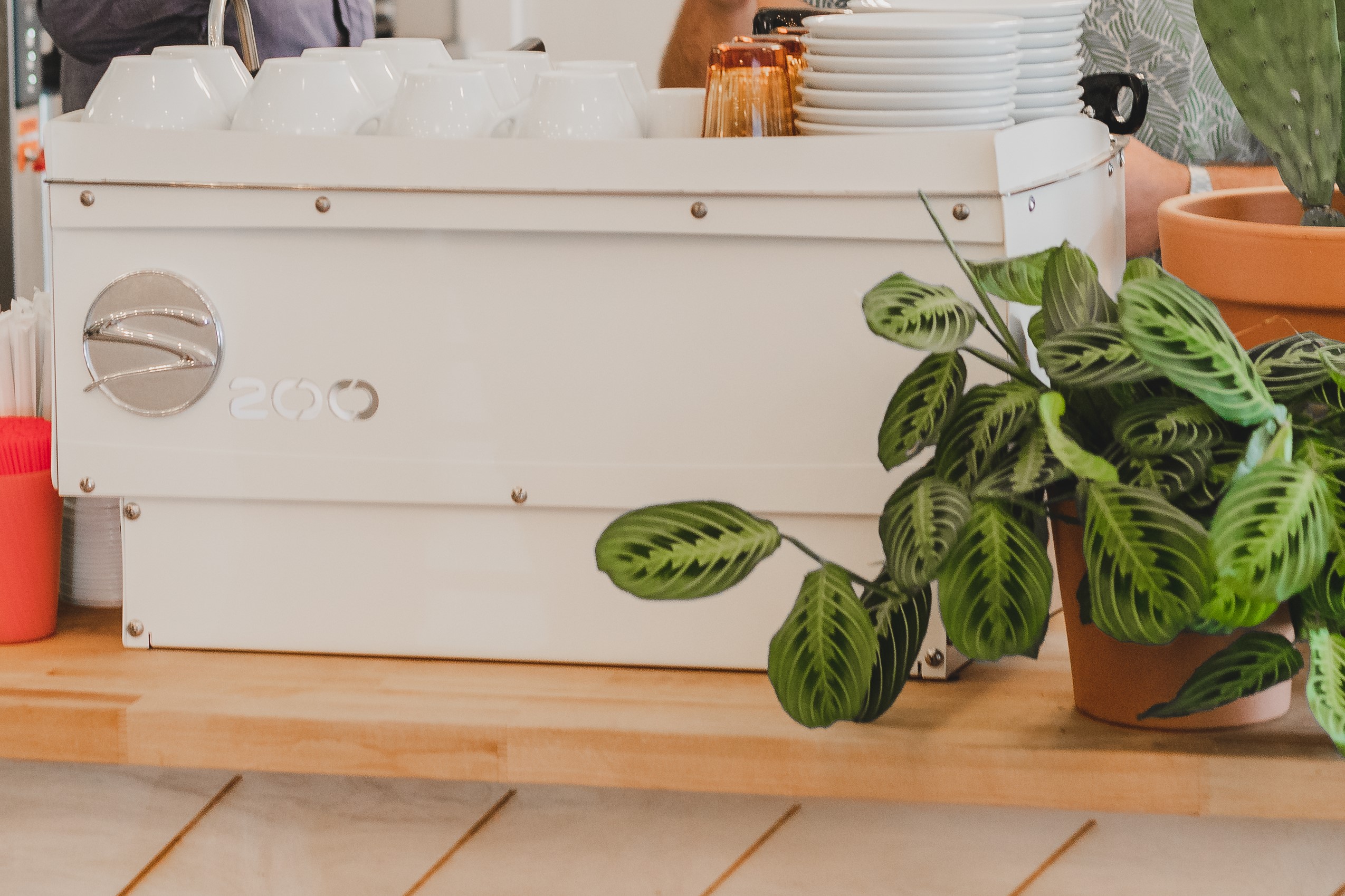
Another US company that got started in Seattle during the 2000’s, Synesso offers an impressive array of standard features on every one of their machines—programmable preinfusion, individual brew temperatures per group, cool touch wands, and digital shot timers just to name a few. Fabricated and built entirely by local craftspeople in Seattle, Synesso machines are great for specialty cafes, high volume operations, and otherwise persnickety professionals.
The S Series
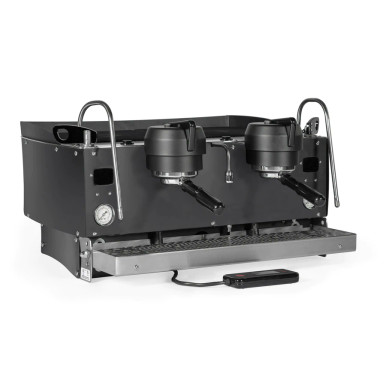
The most approachable offering from Synesso, the S Series is highlighted by programmable volumetrics (including preinfusion), ambidextrous steam wand actuators, and a low-profile body. Made to focus on temperature stability, repeatable extractions, and ease of use, these machines are wonderful for busy quality-focused cafes.
Notable Features:
- Multi-boiler machine
- Individually programmable group temperatures
- Programmable pre-infusion
- Programmable auto-volumetrics
- Ambidextrous steam actuators
- Cool-touch wands
- 2–3 groups
- Digital Display
Victoria Arduino
Started in 1905 Victoria Arduino have been making waves in espresso coffee for well over a century. Now related to Nuova Simonelli as part of Simonelli Group, you can expect to find many of the same advantages in today’s Victoria Arduino machines as you find in Nuova Simonelli’s well-loved equipment—temperature stability, ergonomic considerations for baristas, and easy-to-use operation from making programming adjustments through to the precise accuracy of their volumetrics and gravimetric systems.
White Eagle
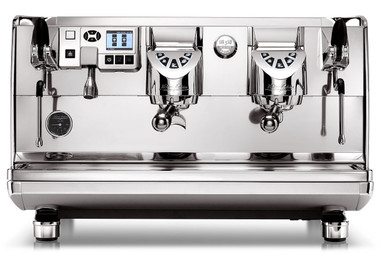
An uncomplicated machine for mid-to-high volume environments, the White Eagle is made to be comfortable and efficient for baristas to use with its raised groups, cool-touch wands, and digital display programming. Available with or without T3 temperature control (the version without is called the White Eagle Digit) this machine is a more budget-conscious package full of many of the features that make Victoria Arduino’s flagship machine, the Black Eagle, as popular as it is.
Notable Features:
- Multi-boiler machine
- 4 auto-volumetric programs per group
- PID controlled T3 technology (in the T3 only, not the White Eagle Digit)
- 2–3 groups available
- Raised groups available
- Digital display
- Optional: Auto-steaming available
- Cool-touch wands
Black Eagle
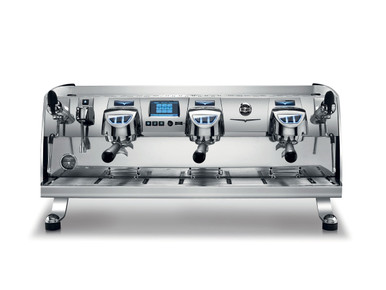
The cream-of-the-crop machine from Victoria Arduino, the Black Eagle brings greater consistency and control to the White Eagle’s platform. T3 temperature control comes standard, and you get the option to choose between the usual auto-volumetric operation or the Gravimetric version—the Black Eagle Gravimetric incorporates scales into the drip tray for increased extraction consistency by relying on beverage mass instead of measuring water volume introduced to the group. Stout construction and plenty of water and power capacity means that this machine can make drinks non-stop and keep on going, so it’s a great option for high-volume environments.
Notable Features:
- Multi-boiler machine
- Auto-volumetric or Gravimetric operation
- PID controlled T3 technology standard
- 2–3 groups available
- Digital display
- 3 brew programs per group
- Cool-touch wands
Hopefully this guide helped to demystify some of the process of choosing the right espresso machine for your commercial environment. Of course, our customer service team is always happy to answer questions, so reach out if you need more guidance or haven’t found the answer you’re looking for yet.
Happy Shopping, y’all.
